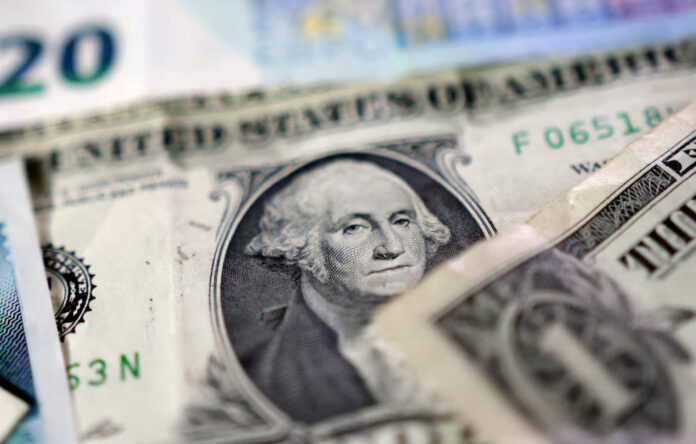
The U.S. dollar held firm on Thursday, poised for its best weekly performance in nearly a year, buoyed by a weakened Japanese yen and political instability in Japan and Europe.
The yen has been under heavy pressure following the rise of Sanae Takaichi as leader of Japan’s ruling Liberal Democratic Party (LDP), positioning her to become the country’s first female prime minister.
Investors expect Takaichi’s leadership to usher in a return to big fiscal spending and loose monetary policy, weakening the yen further.
The Japanese currency last traded slightly stronger at 152.49 per dollar, after sliding overnight to an eight-month low of 153, down more than 3% for the week — its worst showing since September 2024.
“The increase in dollar/yen has been quite relentless, and it seems like nothing can stop it from rallying,” said Carol Kong, a currency strategist at the Commonwealth Bank of Australia.
“In the near term, the confirmation of Takaichi as PM and the upcoming Bank of Japan (BOJ) meeting could be catalysts for further yen weakness, especially if she reinforces dovish fiscal views and the BOJ signals no near-term rate hikes.”
The euro also struggled, pressured by France’s political crisis following the shock resignation of Prime Minister Sebastien Lecornu.
President Emmanuel Macron is expected to appoint a new premier within 48 hours, his office said on Wednesday. The euro last edged 0.09% higher to $1.1639, trimming losses after three days of declines but still down nearly 0.9% for the week.
The U.S. dollar index, which tracks the greenback against six major currencies, was little changed at 98.77, but remains up more than 1% this week, supported by the yen and euro’s weakness.
Other major currencies saw modest gains: sterling rose 0.07% to $1.3413, while the Australian dollar firmed 0.11% to $0.6594. The New Zealand dollar edged 0.1% higher to $0.5792, recovering from losses after the Reserve Bank of New Zealand delivered a surprise 50-basis-point rate cut and hinted at more easing amid a slowing economy.
Minutes from the U.S. Federal Reserve’s September meeting, released Wednesday, showed officials agreed that risks to the labor market had grown enough to justify a rate cut, though they remained cautious about persistent inflation.
“The Fed minutes, as expected, signalled caution by policymakers about future rate cuts,” Kong added. “Markets are still comfortable pricing in two more cuts by year-end, that’s also our base case.”
However, the ongoing U.S. government shutdown could complicate the Fed’s decision-making by delaying key economic data releases, leaving policymakers “flying blind” at the October meeting.
Despite the uncertainty, investors continue to price in about 44 basis points of easing by December, underscoring expectations that U.S. rates will head lower even as global political turbulence keeps markets on edge.
Source: Reuters
Written By Rodney Mbua


















